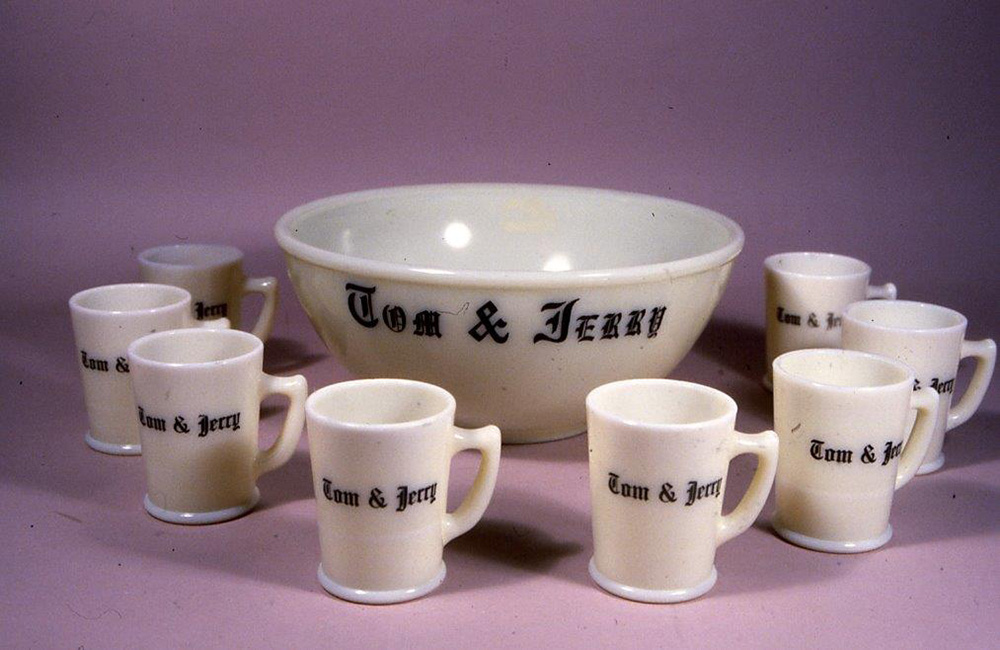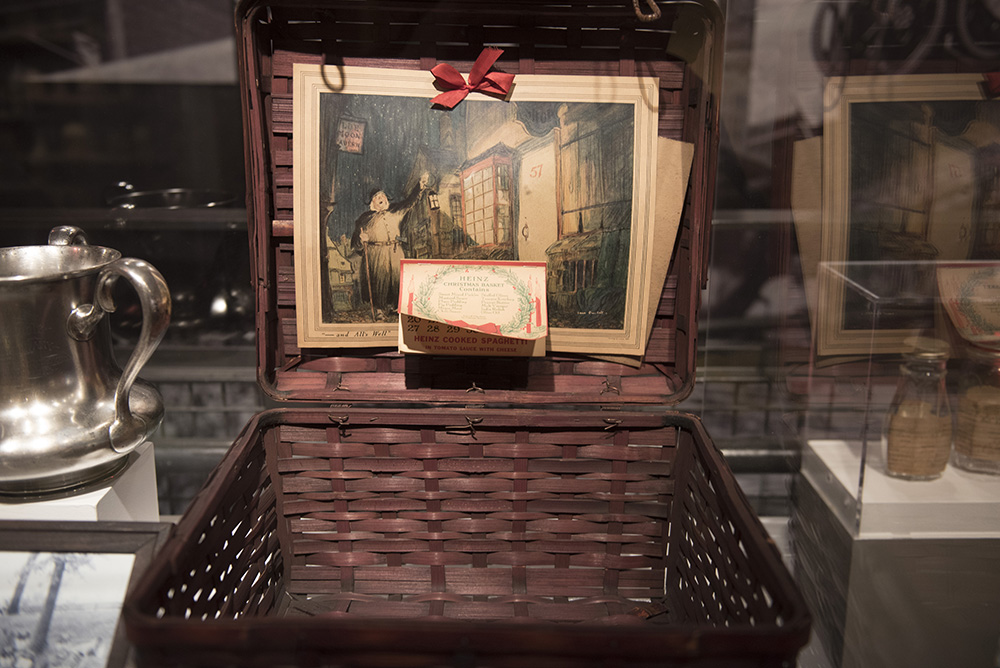This holiday season, visit the History Center to see reminders of holiday traditions past and present.
Find the Santa Mural in the homefront section of the We Can Do It: WWII exhibition on the first floor. The image is from a Sixth War Loan parade in East Liberty during the holiday season of 1944, which was also advertised as the East Liberty Chamber of Commerce Christmas Parade. Uncle Sam and two Santas (maybe one is a helper) are standing at the top of the “Toyland Express” train bringing holiday spirit and reminding Pittsburghers to include a few more war bonds in their Christmas stockings.

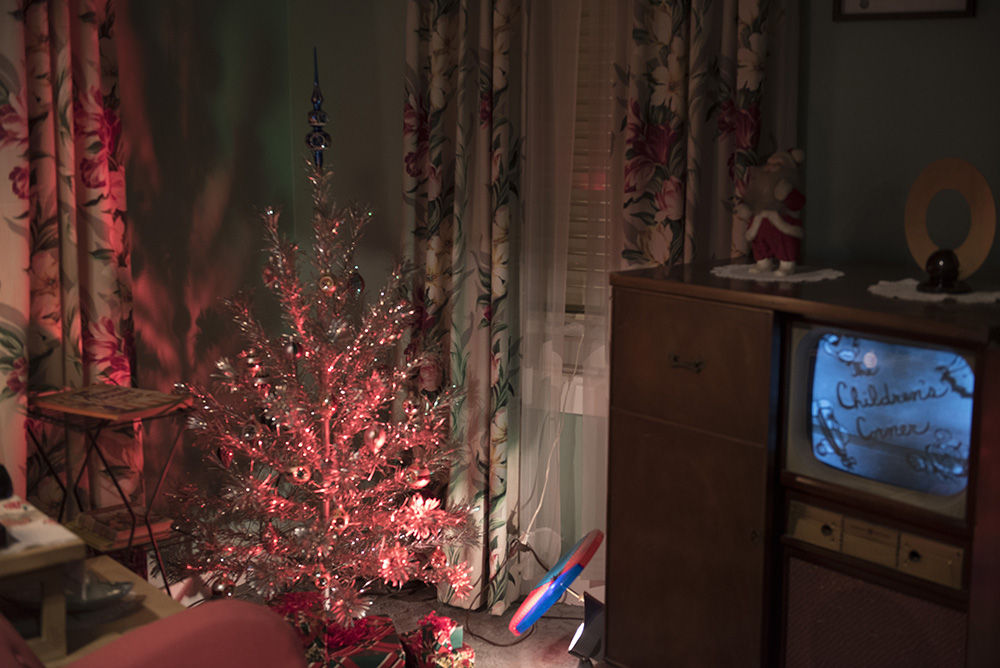
Visit the Pittsburgh: A Tradition of Innovation exhibition on the second floor and see the 1950s suburban house all decked out for Christmas. There’s even an aluminum Christmas tree. The rotating color wheel turns the silvery branches a glistening red, blue, and green, and the whole scene seems magical and modern. Aluminum trees were one of many new holiday decorating products that appeared in the 1950s and ‘60s. The increased supply of materials like aluminum and newly developed plastics for the war effort found applications in domestic goods after 1945, including new types of Christmas decorations.
While you’re on the second floor, pop over to the Western Pennsylvania Sports Museum to see our Franco Harris figure and search out his shoes and the turf from the Immaculate Reception. Franco made the catch on December 23, 1972 and it still ranks as one of the best early Christmas gifts Steelers fans ever received!
On the fourth floor in the Glass: Shattering Notions exhibition, there is a tiny glass prism in the area that examines window glass production. During the Great Depression, John Gugan had no money to buy Christmas gifts for his daughter, Frances. He took an imperfect piece of window glass from the scrap pile at Tygart Valley Glass Co. in Washington, Pa., and fashioned this prism for her. Frances donated the prism and shared this story of true Christmas spirit with us.
While you are in the Glass exhibit, go around the corner to the hotel room. There along the back wall is a “Tom and Jerry” punch bowl. The bowl and the drink it once held have nothing to do with the cartoon cat and mouse. Tom and Jerry punch is a rich holiday drink, a relative of eggnog that flourished in America in the 19th and early 20th centuries and is frequently (though not definitively) credited to Pierce Egan, the English chronicler of sports and popular culture. It is especially popular in Wisconsin and the Midwest.
Then head to the Heinz exhibition and check out the case on Heinz employee perks – there is a Christmas basket there that dates to 1929. Every year, H. J. Heinz distributed Christmas gifts to all of his employees, both factory workers and office staff. In 1899, everyone received umbrellas. In 1912, the women got handbags and the men pocketknives. From 1918 to 1920, all employees received crisp new five dollar bills.
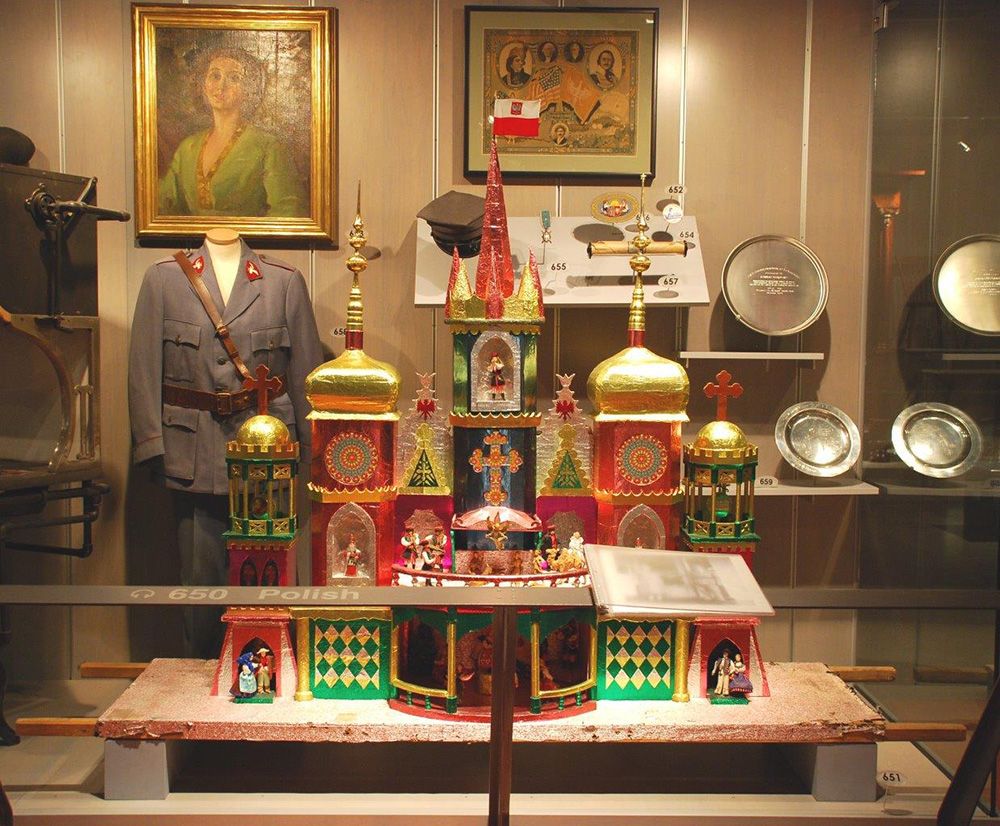
Next, head down the ramp to the Special Collections Gallery. In the Polish section, there is a szopka from the 1980s. This szopka, or manger scene, reflects a centuries-old Polish Christmas tradition. Part Nativity story, part entertainment, people carried the szopkas from house to house where the bearers sang carols and presented a puppet show. This szopka is modeled after St. Mary’s, a famous church in Krakow.
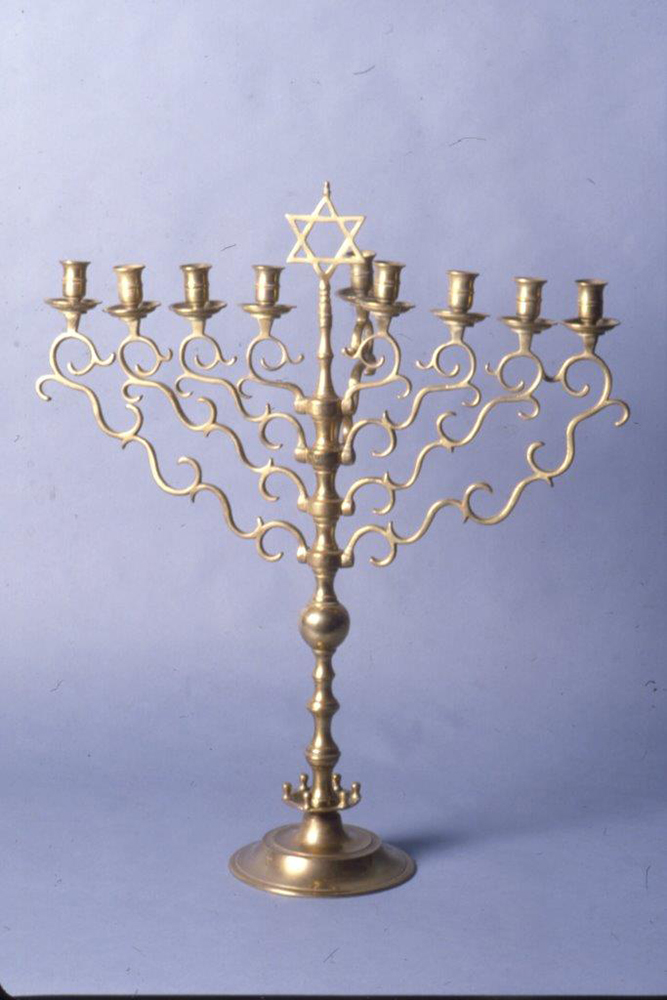
Also in the Special Collections Gallery is a brass Hanukkah menorah from Machsikei Hadas synagogue. Hanukkah is the eight-day Jewish holiday during which one candle or light is lit the first evening and an additional candle is added each night, until eight are lit on the last day. A ninth candle, called the shamash (helper) lights the other candles since tradition requires that the Hanukkah candles be used only for viewing and not for any other purpose. Hanukkah commemorates the rededication of the Second Temple in Jerusalem in the second century BCE. Oil found in the Temple was expected to burn only for one day but instead burned for eight. Learn more about Hanukkah in Pittsburgh from the Rauh Jewish History Programs & Archives: Eight Days of Hanukkah.
Finish your journey on the fourth floor at the holiday window featuring materials from the downtown Kaufmann’s/Macy’s store. Many people started their holidays each year with a journey to see the windows of this department store so it seems a fitting place to stop. You’ll see the recreation of a Cinderella Christmas window that appeared at Macy’s Pittsburgh in 2007. This Christmas display originally told the story of Cinderella in five windows. The figures symbolized the change taking place nationwide in 2006 when Federated Department Stores converted many legendary stores to Macy’s. The Cinderella figures originally came from Chicago, where they were shown at Marshall Field’s. Learn more about the tradition of holiday windows: Holiday Windows in Downtown Pittsburgh.
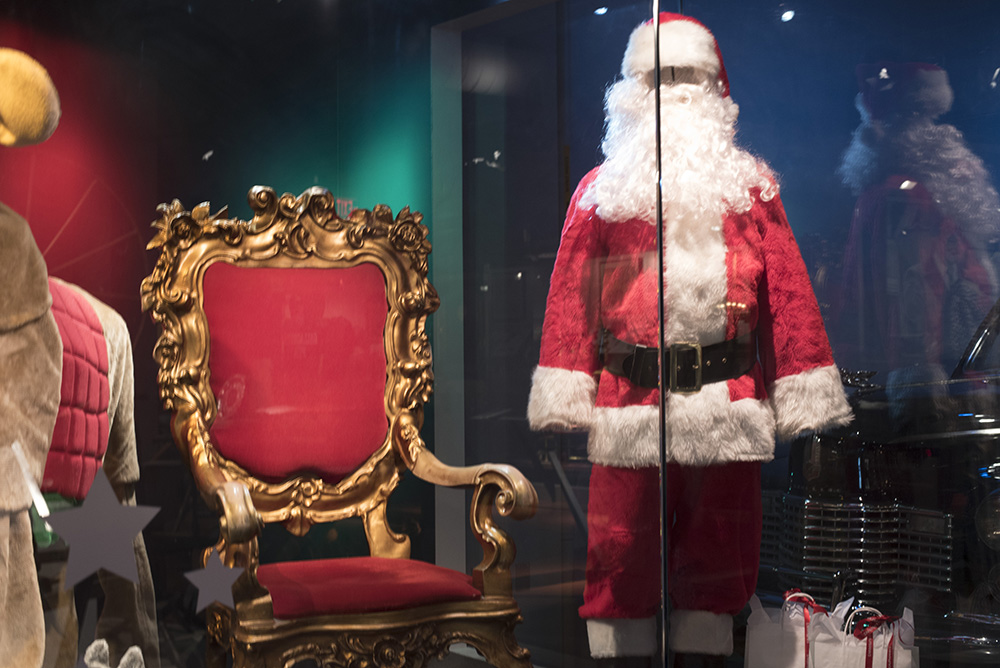
Finally, take a minute to visit with Santa at the Kaufmann’s Santa Land chair. The tradition of having Santa in department stores first started in the 1890s. Although it is unclear when Kaufmann’s first hosted Santa, by the time Macy’s took over in 2006, visiting Santa at Kaufmann’s had become a beloved Pittsburgh tradition.
Happy holidays – may all your wishes come true!
Anne Madarasz is the Vice President Museum of Exhibits and Collections & Co-Director of the Western Pennsylvania Sports Museum.
